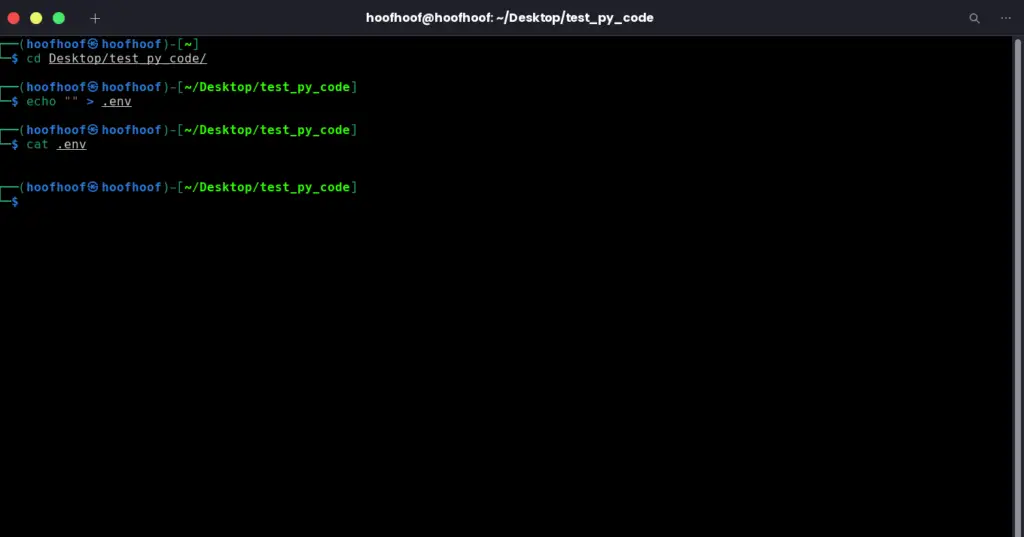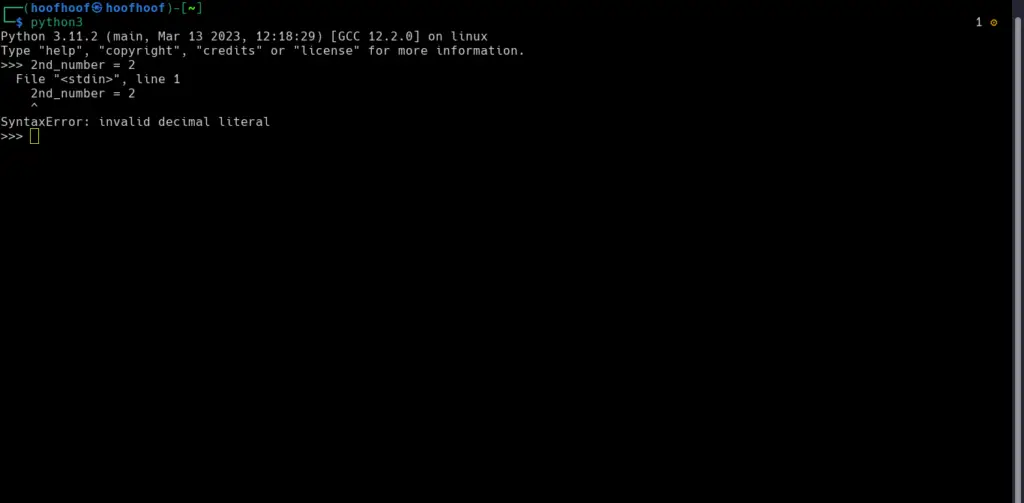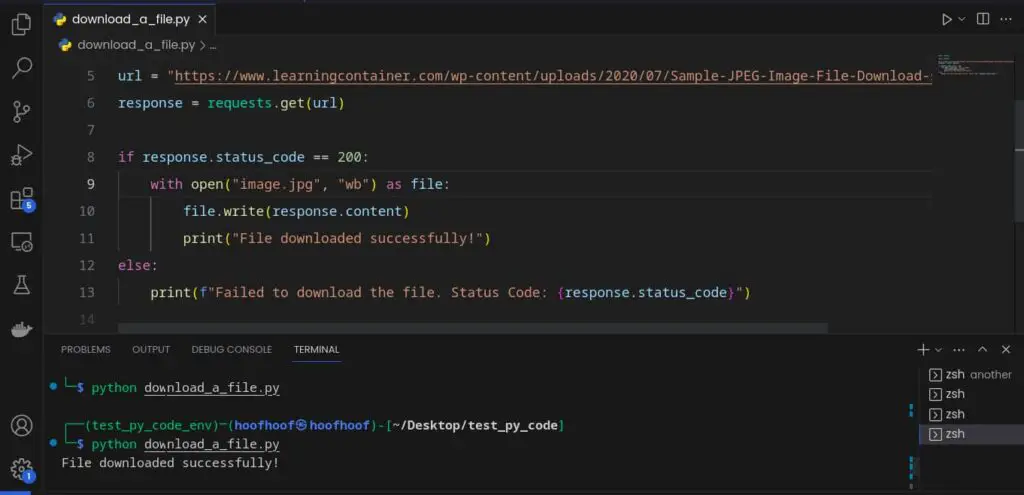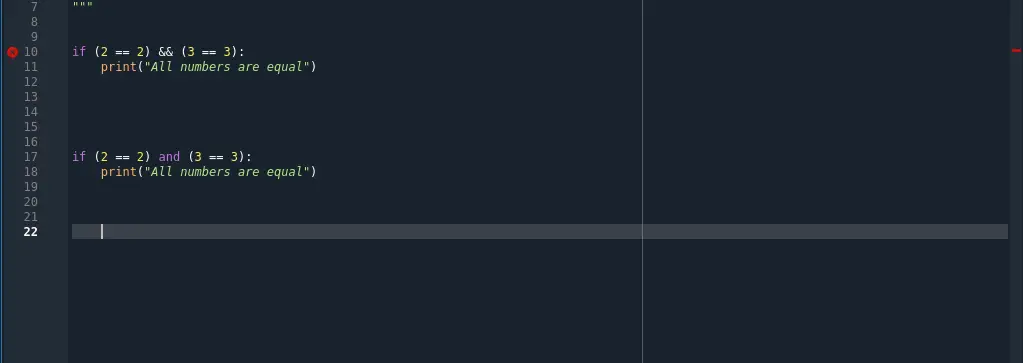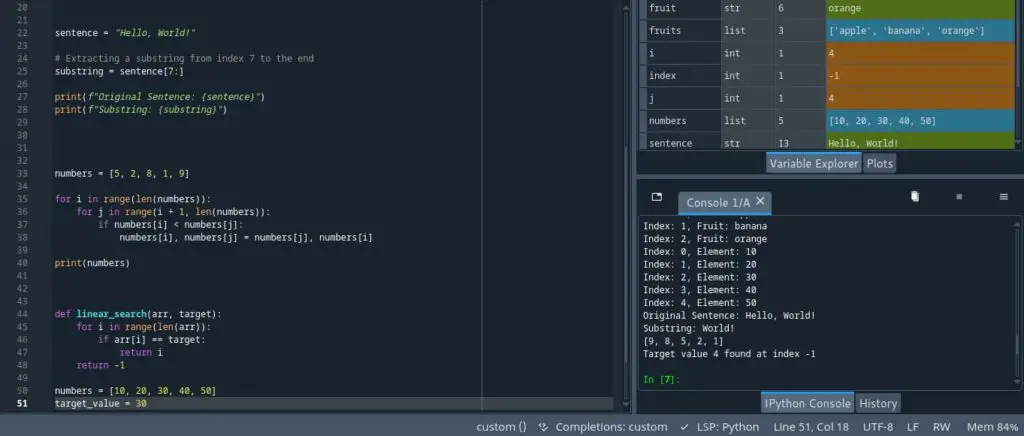Loops are a fundamental construct in programming that allows repetitive execution of a set of instructions.
They are crucial in automating tasks, processing data, and solving complex problems efficiently.
Loops enable programmers to write concise and scalable code by eliminating the need for repetitive manual operations.
From simple iterations to intricate nested loops, this powerful concept empowers developers to tackle a wide range of computational challenges with ease.
All we are familiar with is looping through a collection in a forward manner, as in 1, 2, 3, 4, etc.
But,
Can you do a reverse for loop in Python?
You can perform a reverse for loop in Python through various methods that include using the [::-1] slice notation, the reversed() function, the range() function with a negative step, swapping the loop variable, and reversing the list in-place.
While all methods achieve the goal, the most efficient approach is the reversed() function with a for loop method.
Let’s look at each method in detail
How to run a for loop backward in Python
Let’s explore multiple approaches that enable you to traverse sequences and lists in reverse order effortlessly.
By learning these techniques, you’ll gain the power to simplify operations, modify element order, and solve indexing challenges.
1. Loop backward using the [::-1] slice notation
One of the simplest and most elegant ways to loop backward in Python is by utilizing the [::-1] slice notation.
This technique allows you to effortlessly iterate through a sequence in reverse order.
Here’s how it works:
To use the [::-1] slice notation, simply follow this pattern:
for item in my_sequence[::-1]:
# Code block to execute for each item
Let’s break down the code snippet above:
my_sequencerepresents the sequence or list you want to loop through backward.- The
[::-1]part tells Python to create a reversed copy of the sequence. This slice notation essentially specifies the start and end indices, along with a step value of -1, indicating that we should traverse the sequence in reverse.
Here are a couple of examples:
Example 1: Reversing a list of names using slice notation
Suppose we have a list of names that we want to print in reverse order:
names = ["Alice", "Steve", "Charlie", "Dida"]
for name in names[::-1]:
print(name)
Your Python code should produce:
Dida
Charlie
Steve
AliceExample 2: Finding the largest element in a list
Let’s say we have a list of numbers, and we want to find the largest element using backward looping.
This can be useful when you are anticipating the largest number to be usually at the end of a list.
numbers = [17, 29, 11, 35, 23, 41]
largest = numbers[0] # Assuming the first element is the largest
for num in numbers[::-1]:
if num > largest:
largest = num
print("The largest number is:", largest)
The output should produce the last number, which is 41
Real-world Use Cases:
- Reversing a string: The [::-1] slice notation can be used to reverse the characters in a string, which can be helpful for tasks like palindrome checking or text manipulation.
- Iterating through time-based data: When working with time-series data, such as logs or sensor readings, looping backward allows you to analyze events in reverse chronological order, facilitating trend analysis and anomaly detection.
The [::-1] slice notation is a powerful tool in your Python arsenal for looping backward.
It provides a concise and efficient solution, making your code more readable and maintaining the integrity of your original sequence.
More on how the [::-1] slice notation works in this article: What does [::-1] mean in Python?
2. Use the reversed() function with a loop
Another effective approach for running a for loop backward in Python is by utilizing the reversed() function.
This built-in function allows you to iterate through a sequence in reverse order, providing a simple and efficient solution.
Let’s delve into how it works, and explore practical examples and real-world use cases.
To use the reversed() function, follow this structure:
for item in reversed(my_sequence):
# Code block to execute for each item
Here’s a breakdown of the key elements:
my_sequencerepresents the sequence or list you want to loop through backward.- The
reversed()function takes the sequence as input and returns a reverse iterator, allowing you to traverse the elements in reverse order.
Example 1: Printing a list of numbers in reverse order using reversed() function
Suppose we have a list of numbers and want to print them in reverse order:
numbers = [1, 2, 3, 4, 5]
for num in reversed(numbers):
print(num)
The output:
5
4
3
2
1Example 2: Modifying a list in reverse
Let’s say we have a list of names and want to append them to a new list in reverse order:
names = ["Alice", "Julia", "Charlie", "Dida"]
reversed_names = []
for name in reversed(names):
reversed_names.append(name)
print(reversed_names)
The output is an entirely new list containing the names in reverse order.
['Dida', 'Charlie', 'Julia', 'Alice']
Real-world Use Cases:
Processing historical data: When analyzing historical data, such as financial records or sales figures, looping backward using reversed() can help you examine past events in the correct chronological order.
The reversed() function offers an intuitive and concise way to loop backward in Python. It simplifies the code, making it more readable and efficient.
Consider utilizing this approach whenever you need to iterate through a sequence in reverse order and create new data structures.
3. Utilize the range() function with a negative step
Another effective technique to run a for loop backward in Python is by utilizing the range() function with a negative step value.
This method allows you to control the iteration direction and step size, enabling seamless backward looping.
How does that work?
To implement this approach, follow this structure:
for i in range(start, end, step):
# Code block to execute for each iteration
Here’s a breakdown of the code components:
startrepresents the starting point of the loop (usually the length of the sequence minus one to begin from the last element).endis the ending point, which is one less than the desired starting position (usually -1 to loop until the first element).stepspecifies the decrement value, typically -1 to move backward in each iteration.
Here are examples
Example 1: Printing a range of numbers backward using range() with a negative step
Let’s print a range of numbers backward from 5 to 1:
for num in range(5, 0, -1):
print(num)
Results:
5
4
3
2
1You can also modify a list in reverse order using the range() function.
Example 2: Modifying a list in reverse order
names = ["Hoof", "meow", "purr", "woof"]
for i in range(len(names)-1, -1, -1):
names[i] = names[i].upper()
print(f"modified name: {names[i]} at position {i}")
print(names)
Real-world Use Cases:
- Checking a palindrome
Utilizing the range() function with a negative step provides flexibility and control for backward looping in Python.
It enables you to customize the starting point, ending point, and step size to fit your specific requirements.
4. Swap the loop variable
Another effective technique for running a for loop backward in Python is by swapping the loop variable.
By adjusting the loop variable’s starting point and decrementing it in each iteration, you can achieve a backward loop.
To implement this approach, follow this structure:
for i in range(start, end, step):
index = end - i
# Code block to swap values for each iteration
Here’s a breakdown of the code above:
startrepresents the loop’s starting point, usually the sequence length minus one.endis the ending point, typically -1 to loop until the first element.stepspecifies the decrement value, usually -1 to move backward in each iteration.indexis the calculated index based on the loop variable and serves as the reversed index to access elements.
Example 1: Printing a list of names in reverse order by swapping the loop variable
Let’s print a list of names backward using the swap technique:
names = ["Alice", "Bob", "Charlie", "Dave", "Hoof"]
for i in range(len(names) // 2):
index = len(names) - 1 - i
names[i], names[index] = names[index], names[i]
print(names)
The results:
['Hoof', 'Dave', 'Charlie', 'Bob', 'Alice']Let’s go through the code step by step to understand how it works and achieves a reversed list by swapping values:
- We start with a list of names:
["Alice", "Bob", "Charlie", "Dave", "Hoof"]. - The
forloop iterates from the beginning of the list (i = 0) to halfway through the list (len(names) // 2).- Since we are swapping values, iterating only halfway ensures that we cover the entire list without re-swapping elements.
- Inside the loop, we calculate the corresponding index
jfor swapping using the formulalen(names) - 1 - i.jrepresents the index of the element on the opposite side of the list.- For example, when
iis 0,jis the last index, wheniis 1,jis the second-to-last index, and so on.
- The swapping operation
names[i], names[j] = names[j], names[i]exchanges the values ofnames[i]andnames[j].- This effectively swaps the elements at positions
iandjin the list.
- This effectively swaps the elements at positions
- The loop continues until it reaches halfway through the list, performing the swapping operation for each iteration.
- Once the loop completes, the list
nameshas been reversed in-place, resulting in['Hoof' 'Dave', 'Charlie', 'Bob', 'Alice'].
By swapping elements from both ends of the list towards the center, we achieve a reversed list without requiring additional temporary variables.
This technique ensures an efficient and straightforward way to reverse the order of elements in a Python list.
5. Start by reversing the list before performing a for loop
Another technique to run a for loop backward in Python is by first reversing the list itself before iterating over it.
This approach allows you to utilize a standard forward loop while effectively traversing the reversed list.
Here’s how:
To implement this approach, follow this structure:
- Reverse the list using the
reverse()method or the[::-1]slice notation. - Perform a regular for loop to iterate over the reversed list.
Here’s an explanation of each key step:
1. Reverse the list first by using the reverse() method or the slice notation:
- Using the
reverse()method:
my_list.reverse()
- Using the
[::-1]slice notation:
my_list = my_list[::-1]
2. Perform a forward for loop:
for item in my_list:
# Code block to execute for each iteration
Example 1: Printing reversed elements by reversing a list first
Let’s print the elements of a list in reverse order using the reverse-and-loop technique:
numbers = [1, 2, 3, 4, 5]
numbers.reverse()
for num in numbers:
print(num)
Output?
5
4
3
2
1Example 2: Modifying a list in reverse order
Suppose we have a list of names and want to modify it in reverse order:
names = ["Alice", "Bob", "Charlie", "Dave"]
names = names[::-1]
for name in names:
name = name.upper()
print(name)
Results?
DAVE
CHARLIE
BOB
ALICE
Real-world Use Cases:
- Reversing data in preparation for processing: When working with data that needs to be processed or analyzed in reverse order, reversing the list beforehand simplifies the subsequent operations.
By starting with a reversed list before performing a standard forward loop, you can achieve a backward loop effectively and conveniently.
This technique leverages the inherent capabilities of Python lists, ensuring readability and simplicity in your code.
Which approach is most efficient and fast to run a for loop backward?
Among the provided approaches, the most effective and fast method for looping a for loop backward in Python is using the reversed() method with a for loop.
The reversed() method allows you to create a reverse iterator for a sequence, enabling efficient backward iteration without creating an additional copy of the sequence.
By utilizing the reversed() method, you can iterate over the elements of the sequence in reverse order, providing a clean and concise syntax.
This approach has been proven to consistently exhibit faster execution times compared to other techniques, making it an optimal choice for running a for loop backward.
Here is the test code I ran a couple of times and using the reversed() function with a for loop performed much faster in all instances:
import timeit
# Method 1: Loop backward using the [::-1] slice notation
def method1():
numbers = list(range(10000))
for num in numbers[::-1]:
pass
# Method 2: Use the reversed() function with a loop
def method2():
numbers = list(range(10000))
for num in reversed(numbers):
pass
# Method 3: Utilize the range() function with a negative step
def method3():
numbers = list(range(10000))
for i in range(len(numbers) - 1, -1, -1):
num = numbers[i]
pass
# Method 4: Swap the loop variable
def method4():
numbers = list(range(10000))
for i in range(len(numbers)):
index = len(numbers) - 1 - i
num = numbers[index]
pass
# Method 5: Start by reversing the list before performing a for loop
def method5():
numbers = list(range(10000))
numbers.reverse()
for num in numbers:
pass
# Measure the execution time for each method
print("Method 1:", timeit.timeit(method1, number=10000))
print("Method 2:", timeit.timeit(method2, number=10000))
print("Method 3:", timeit.timeit(method3, number=10000))
print("Method 4:", timeit.timeit(method4, number=10000))
print("Method 5:", timeit.timeit(method5, number=10000))
The results of my tests were:
# Test 1
Method 1: 2.1474987830006285
Method 2: 1.9812577100092312
Method 3: 3.58342980100133
Method 4: 8.966772904997924
Method 5: 2.0530725499993423# Test 2
Method 1: 2.0849879029992735
Method 2: 1.83440057199914
Method 3: 3.6122751570073888
Method 4: 8.476331758996821
Method 5: 2.043476559003466# Test 3
Method 1: 2.342891245003557
Method 2: 1.8600156860047719
Method 3: 3.492538341000909
Method 4: 8.681044442011626
Method 5: 1.9332926780043636By leveraging the efficiency of the reversed() method, you can achieve optimal performance while maintaining code simplicity.
This method is reliable and faster, widely used, and recommended for effectively looping a for loop backward in Python.
Why run a for loop backward?
By utilizing backward for loops in Python, programmers can effectively address the following needs depending on their specific use cases:
- Simplify sequence traversal: Running a for loop backward can simplify operations that involve accessing elements in reverse order, making it easier to work with sequences and lists.
- Modify element order: Reversing the loop allows for efficient modification of the order of elements within a sequence without requiring additional data structures or complex algorithms.
- Achieve specific logic requirements: Some programming scenarios call for specific logic that requires looping from the end of a sequence to the beginning. Running a for loop backward provides a straightforward approach to meeting such requirements.
FAQs
How to run a for loop backward with a list
To run a for loop backward with a list in Python, use the reversed() function in conjunction with a loop. The syntax is as follows: for item in reversed(my_list). By applying the reversed() function to the list, you create a reverse iterator that allows you to traverse the elements in reverse order. The loop iterates over the reversed list, enabling you to process the elements from the last to the first.
How to loop backward with a string in Python
To loop backward with a string in Python, you can follow the same guidelines by utilizing the reversed() function with a loop.
This approach allows you to iterate over the characters of the string in reverse order.
Here’s the code syntax to use:
my_string = "Hello, World!"
for char in reversed(my_string):
# Code block to execute for each iteration
In this snippet example, the reversed() function is applied to the string my_string, creating a reverse iterator.
The loop then iterates over the reversed string, allowing you to process the characters in reverse order.
Let’s consider an example hello world that prints each character of the string in reverse:
my_string = "Hello, World!"
for char in reversed(my_string):
print(char, end='')
Output:
!dlroW ,olleHAnd voila!
You have your string printed in reverse order.
Another common example is the palindrome checker.
Let’s use the reversed() method to check if a word is a palindrome. Here’s the code:
def is_palindrome(word):
reversed_word = ''.join(reversed(word))
return word == reversed_word
# Example usage
input_word = "anna"
if is_palindrome(input_word):
print(f"{input_word} is a palindrome.")
else:
print(f"{input_word} is not a palindrome.")In this example, the
is_palindromefunction creates a reversed version of the word by using thereversed()method andjoin()function.The
reversed()method returns a reverse iterator for the characters in the word, andjoin()combines them back into a string.The function then checks if the original word is equal to the reversed word.
If they match, it returns
True, indicating that the word is a palindrome.Otherwise, it returns
False.When running the code with the input word “level” or “Anna,” it correctly identifies it as a palindrome and prints:
level is a palindrome.Or
Anna is a palindrome.
Using the reversed() method simplifies the process of creating a reversed version of the word and comparing it to the original word, allowing for an efficient and concise implementation of the palindrome checker in Python.
Wrap up!
We have explored various techniques to run a for loop backward in Python.
We have seen how different approaches can be used to iterate through a list in reverse, including utilizing slice notation, the reversed() function, the range() function with a negative step, swapping the loop variable, and starting with a reversed list.
Based on the guidelines and considerations, the most efficient and recommended method for looping a for loop backward is using the reversed() function with a loop.
This approach provides optimal performance, simplicity, and readability.
Remember, when running a for loop backward, choose the technique that best suits your specific needs.
Create, inspire, repeat!

